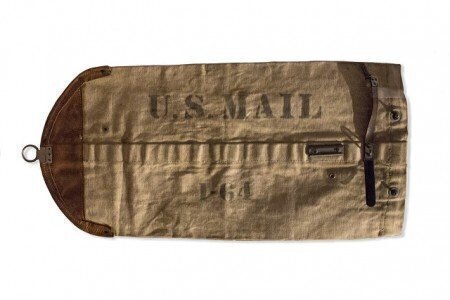On July 26, 1775, the Continental Congress created the first version of the Post Office, naming Benjamin Franklin as the first Postmaster General. Here’s a look at 10 fascinating facts about a uniquely American institution.
 1. The Founding Fathers were all for a postal system, especially Franklin. It was Franklin who modified and improved the postal delivery system as Joint Postmaster General for the Crown, greatly expanding its services in the Colonies. He was fired by the British in 1774 for sympathizing with rebellious forces. When the new nation needed a postmaster, it turned to Franklin in 1775, and Congress paid him a salary of $1,000 a year.
1. The Founding Fathers were all for a postal system, especially Franklin. It was Franklin who modified and improved the postal delivery system as Joint Postmaster General for the Crown, greatly expanding its services in the Colonies. He was fired by the British in 1774 for sympathizing with rebellious forces. When the new nation needed a postmaster, it turned to Franklin in 1775, and Congress paid him a salary of $1,000 a year.
2. The post office was in the Articles of Confederation, too. Article IX said that the government “shall also have the sole and exclusive right and power of … establishing or regulating post offices from one State to another, throughout all the United States, and exacting such postage on the papers passing through the same as may be requisite to defray the expenses of the said office.”
3. The Constitution gave the Post Office (and Congress) even more power. The Constitution gives Congress the ability “To establish Post Offices and post Roads” in Article I, Section 8. That gives Congress the power to create a postal system, and the ability to acquire and control the land for the “post roads” to carry the mail and the buildings needed to maintain the system. In 1789, that meant 75 Post Offices and about 2,400 miles of post roads!
4. Today, the Postal Service is slightly larger. It has more than 31,000 Postal Service-managed offices and 511,000 employees. Carriers and drivers travel more than 1.3 billion miles (yes, that is billion) a year transporting and delivering the mail.
5. Abraham Lincoln was a local postmaster. As a postmaster in New Salem, Illinois from 1833 until 1836, Lincoln would occasionally deliver the mail by stashing it inside his hat.
6. According to the Postal Service’s website, here are some other famous people who delivered the mail or worked as clerks, or postmasters: Bing Crosby, Walt Disney, William Faulkner, Charles Lindbergh, Richard Wright and Adlai Stevenson.
7. The Postal Service as a high-tech innovator. The quest to deliver the mail faster and more consistently led to the pioneering uses of steamboats, trains, boats, cars, planes, and horses.
8. The Pony Express was a financial failure. Like all great technological innovations, the privately operated Pony Express that ran in 1860 and 1861 had a lot of risks. The use of relay horses cut mail-delivery times in half, but another technology, the telegraph, grounded a Pony Express that was deeply in debt.
9. The Post Office had a dog as a mascot, until …. Yes, Owney the dog was befriended by workers in Albany in 1888 and soon became a sensation as he rode on the rail cars along with the mail to New York. For the next decade, he was an international postal ambassador until he committed a cardinal sin: Owney bit a mail worker. Although a postmaster put Owney down, his co-workers paid to have him stuffed, and he’s at the National Postal Museum today on display.
10. The price of stamps has gone up slightly in the past few years. Until 1968, it cost 5 cents to mail a one-ounce piece of mail, and it only cost 3 cents in the 1930s. Times have changed as has the cost structure of the mail business. The current cost of a first-class stamp is 50 cents for the first ounce.







